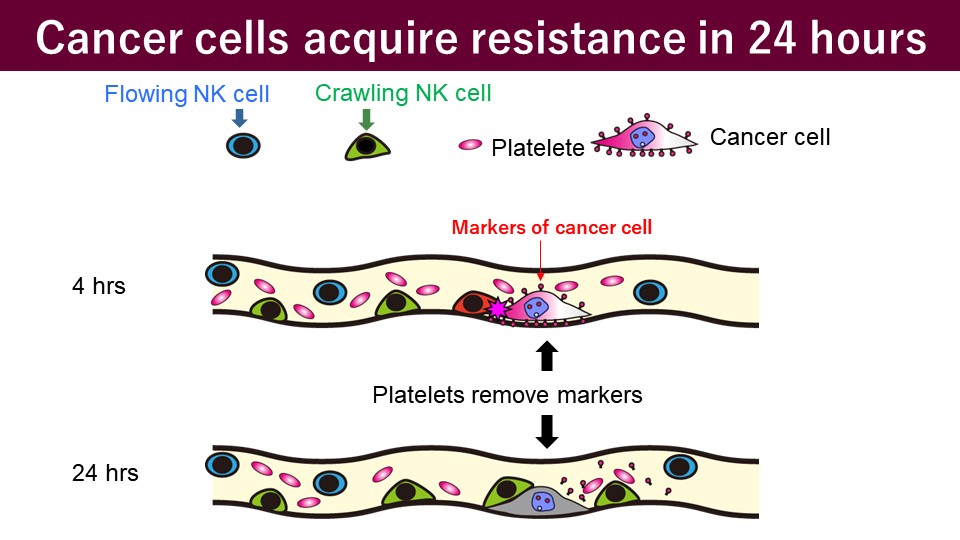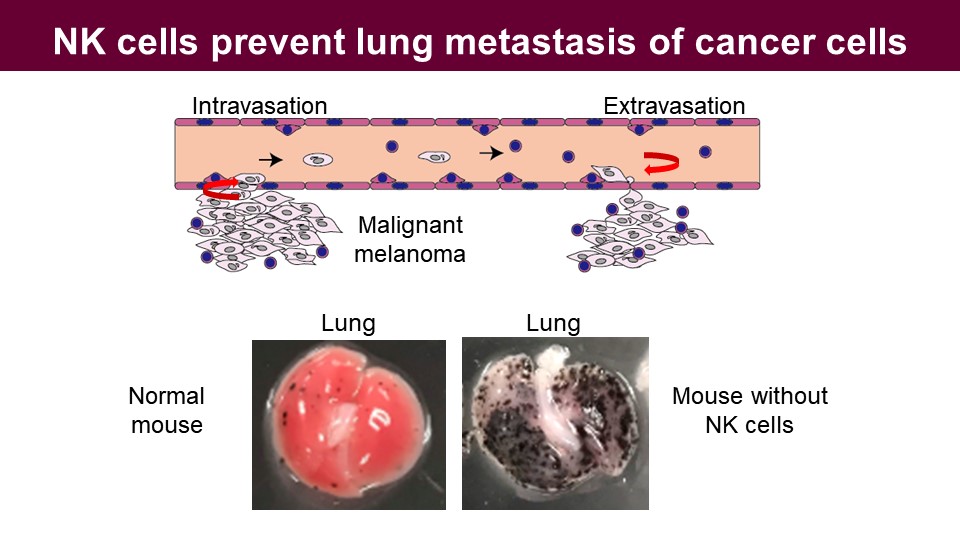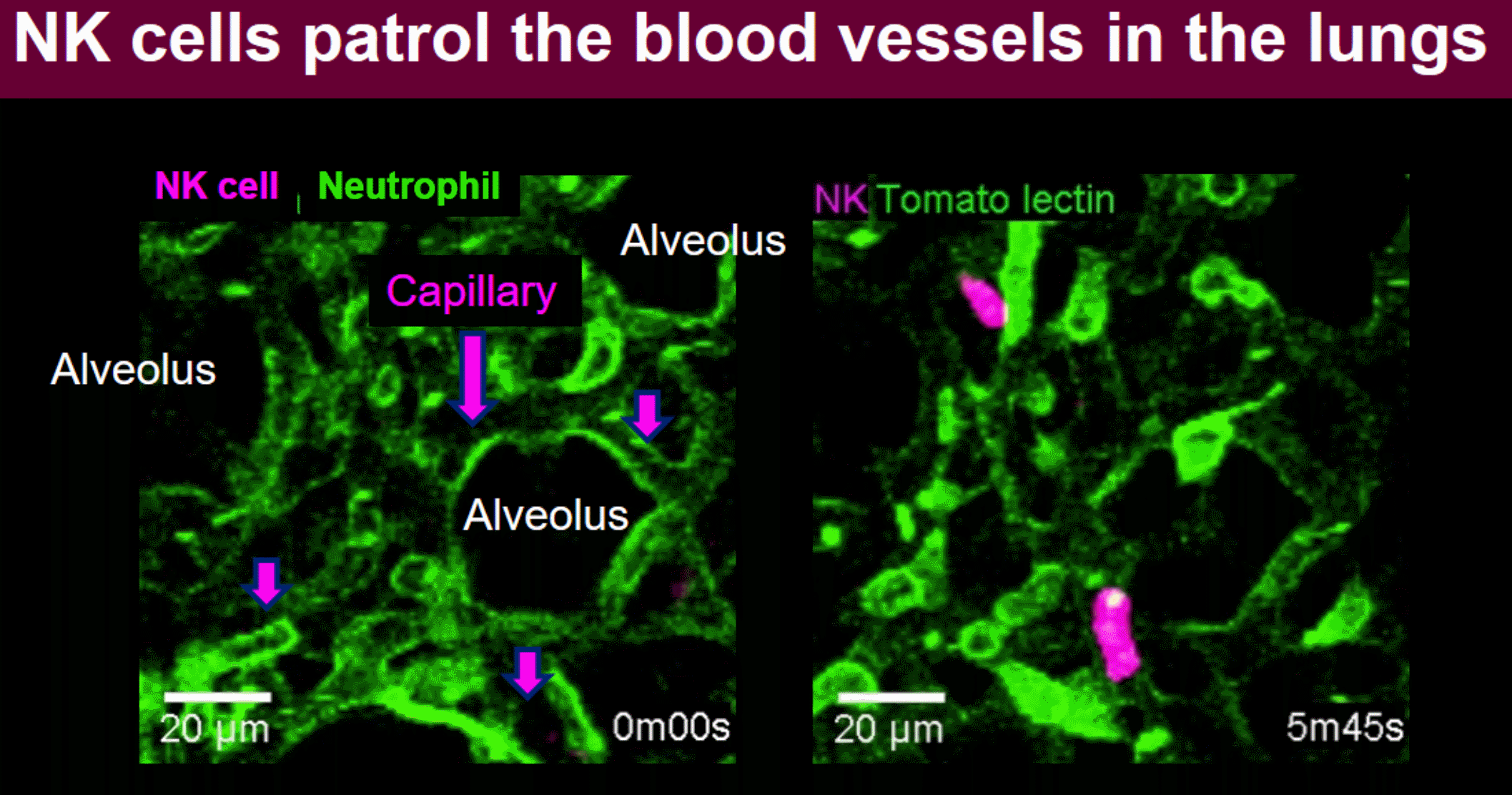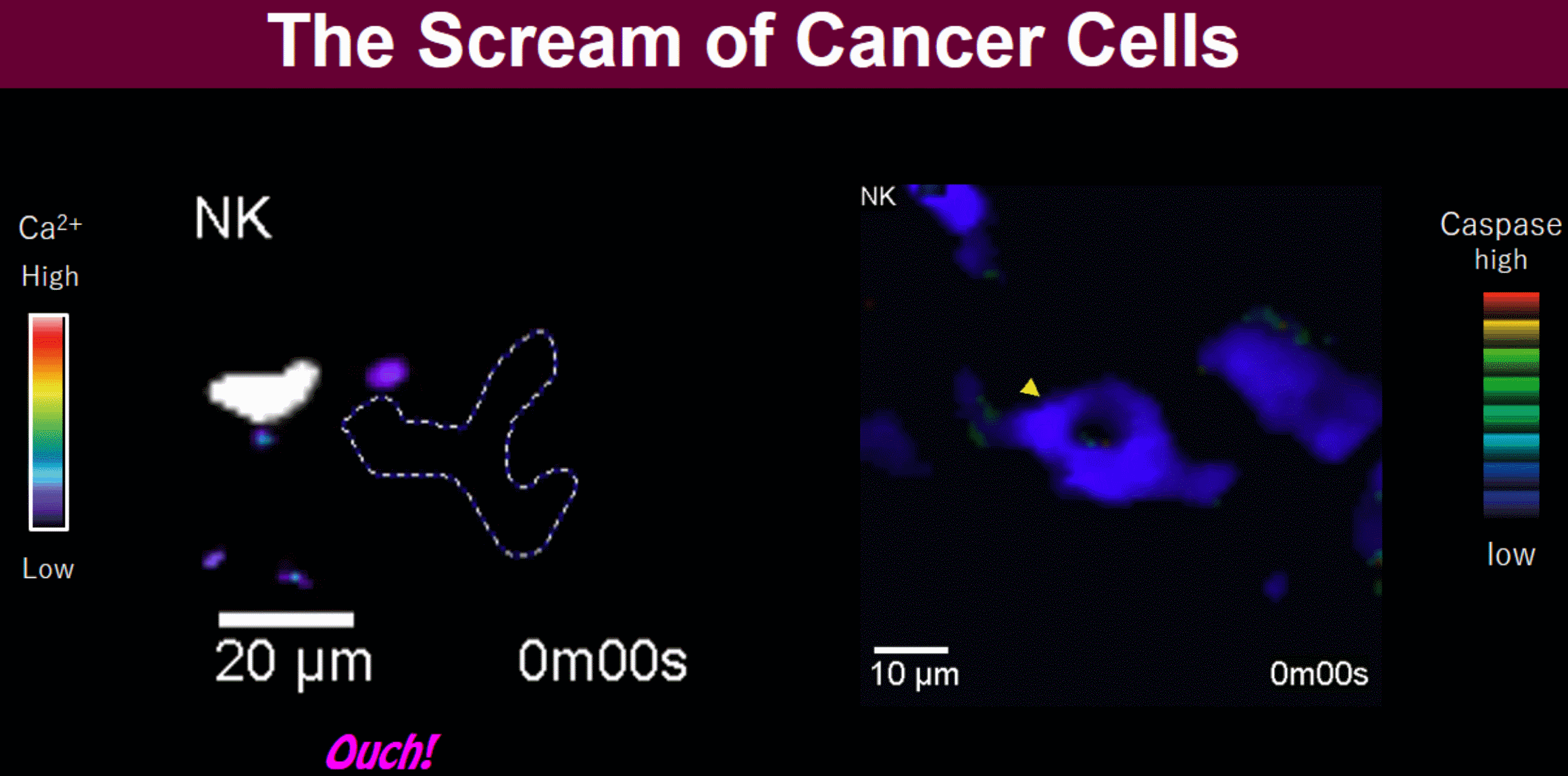Visualization of metastatic cancer cell killing by NK cells
〜Live coverage of the battle between NK cells and cancer cells on lung capillaries〜
Abstract

Ninety percent of the cause of the death of cancer patients is metastasis, not the primary tumor. The organ where cancer metastasis most often occurs is the lungs. Therefore, if we can suppress the metastasis of cancer to the lungs, we can expect a significant improvement in the prognosis of cancer patients. In recent years, it has become clear that a large number of cancer cells are circulating in the blood of cancer patients from a very early stage. The reason why they do not easily form metastatic foci is that natural killer (NK) cells efficiently kill cancer cells in the lungs. However, it has not observed how NK cells eliminate cancer cells in the lung at the microscopic level. Using highly sensitive luminescence imaging and multiphoton microscopy, we revealed that NK cells and cancer cells fight are engaged in a duel on the vascular endothelium of the lung. Cancer cells arriving in the lungs duel with NK cells approximately once every two hours, and because the winning rate is almost 50%, 99% of the cancer cells can be eliminated in 24 hours. However, it was also found that the 1% survived cancer cells acquired the ability to hide from NK cells. The results of this research were published online in the international journal eLife on Feb 3, 2022 (DOI: 10.7554/eLife.76269).
Background

Ninety percent of patients who die from cancer die from the metastasis, not from the primary tumor. It is known that natural killer (NK) cells play an important role as immune system cells that prevent the lung metastasis of cancer cells. For example, the figure on the right shows the lungs of healthy mice and NK cell-depleted mice, two weeks after inoculation with malignant melanoma, a black cancer. How do NK cells prevent cancer cells from metastasis in the lungs? This study started with this simple curiosity. We aimed to clarify where NK cells are located in the lungs, at what timing they attack cancer cells, and why some cancer cells escape this NK cell surveillance mechanism.
Details of the research


First of all, how do NK cells work in the lungs? When the lungs are observed under a multiphoton microscope, they look like the figure on the right. A large number of capillaries surround the alveoli. Neutrophils and NK cells (Magenta) are patrolloing in the blood vessels by crawling a little, jumping, and moving repeatedly. The following video shows what happens when they find a cancer cell. In the video on the left, NK cells are shown in white. A molecular spy that detects calcium concentration is placed in the cancer cells. When the NK cells move to find the cancer cells, the cancer cells scream "Ouch! (rise in calcium). After that, a molecule called caspase, which is a switch used by NK cells to kill cancer cells, is activated (see the video on the right). This activation of caspases is like a funeral march for the cell, after which the molecules in the cell are digested and die.
The phenomenon shown here can be observed within 4 hours after the cancer cells arrive in the lung. However, when the observation was made 24 hours later, it was found that NK cells could no longer kill cancer cells. When we examined the detailed mechanism of this phenomenon, we found that Necl5/PVR/CD155, a molecule on the surface of cancer cells that NK cells use as a marker of cancer cells, was reduced during the first 24 hours after arrival in the lung.
Significance
It has been known that NK cells prevent cancer cells from metastasis, but the actual mechanism was unknown. By observing the actual process of eliminating cancer cells, we found that NK cells can efficiently kill cancer cells that have just reached the lungs, while cancer cells that have survived acquire a mechanism to escape from NK cells within 24 hours. This is a discovery that we could not have known unless we actually held the scene under a microscope.
Future Developments
Preventing cancer cells from metastasis to the lungs can greatly improve the prognosis of patients. Since the mechanism by which cancer cells escape the surveillance of NK cells has been clarified, I believe that we can propose a new treatment method to unmask these cancer cells.
Funding and Support
This work was supported by the Grant-in-Aid for Scientific Research from Japan Society for the Promotion of Science (JSPS), the Japan Science and Technology Agency (JST) through the Core Research for Evolutional Science and Technology (CREST) program, and the Japan Science and Technology Agency (JST) through the Moonshot R&D program.